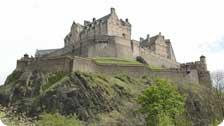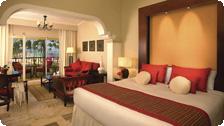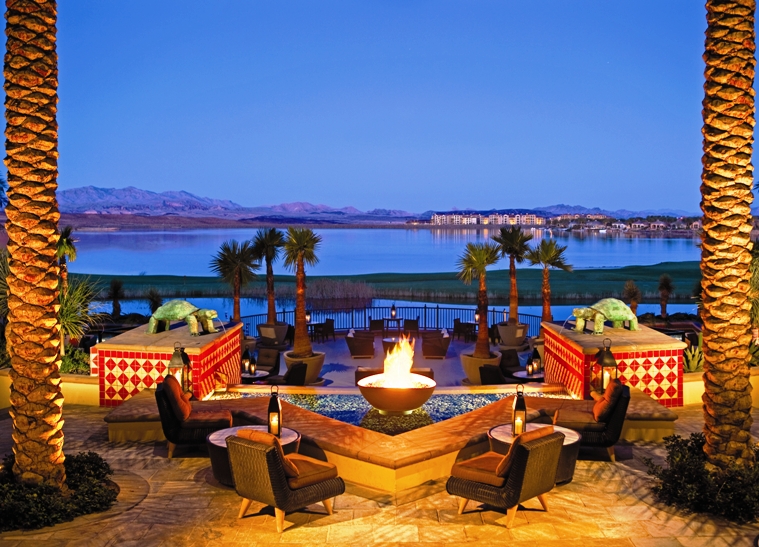by Willard Manus
The first thing to remember about the Edinburgh Festival is that it’s a misnomer. The annual August arts jamboree in Scotland’s capital city should really be called the Edinburgh Festivals, if only because there are eight festivals taking place concurrently.
The prestigious one is the International Festival, which, being heavily subsidized by public and private donors, concentrates on the “high” arts—symphonies, operas, dance, theatre, chamber music and solo recitals, presented by famous companies and performers. It was launched in 1947 as an impetus for peace and unity in Europe after WW II.
Then there is the more brash, plebian, upstart Fringe Festival, a 60’s counter-cultural response to the decorous goings-on in the plush auditoriums. The Fringe, a cultural smorgasbrod offering everything from drama to mime, cabaret, drag shows, mini-cirques, performance art, student productions and stand-up comedy, had a record-breaking year in 2005, with ticket sales hitting 1,335,00 and more than 800 shows being mounted.
So popular and prosperous is the Fringe that it is now vying to merge with the International. “While the Fringe keeps growing and goes from strength to strength, the International seems stuck on a backward-looking formula which doesn’t embrace the entirety of what Edinburgh is about. It’s time we two organizations started working together,” said one of the Fringe directors.
His position was supported by several leaders of the other organizations involved in the festival—jazz, art, photography, film, books and tattoo. That’s right, tattoo, as in the nightly quasi-military, kitschy celebration at Edinburgh Castle replete with marching bands, Highland Flings, drum teams, fireworks and skirling pipers in Braveheart kilts.
“We will never merge with the Fringe, or anyone else,” testily replied Sir Brian McMaster, the long-standing director of the International. “All the festivals are different and that’s what makes Edinburgh so special. We work together already, but merging into one organization would not work, especially where the International and the Fringe are concerned. We are two disparate entities, one of which is anarchic. The main festival needs to be separate.”
Internecine battles aside, the Edinburgh Festival is without question the biggest and most famous arts festival in the world, an event of Olympian proportions. Last year upwards of 500,000 culture-vultures descended on the city, my wife and I among them. The experience turned out to be one of the most exhilarating—and exhausting—of our lives.
On our first day we caught a performance of “Shakespeare for Breakfast.” Seeing a play at ten in the morning is a little disconcerting, but, hey, that’s what we came all the way from California for, to be disconcerted. Taken out of ourselves. Uplifted, Challenged. Transformed.
The hour-long show was a hoot—various Shakespearean characters trapped in a reality TV show with amusing results. We enjoyed the complimentary coffee and croissants as well.
Next stop was Venue 204, better known as Sweet Ego, where the L.A.-based actor Barold Phillips was performing a solo show, “Nymphs and Shepherds (A Paedophile’s Life),” written by David Hines. To reach the theatre, we had to walk down the Royal Mile, the festival’s main drag, a wide, cobble-stoned, pedestrian-only thoroughfare which slices through the heart of Edinburgh’s old town.
It was like Mardi Gras out there. We passed the city chambers, the ubiquitous Starbucks, rows of shops, cafes and pubs. The gaily-festooned street was swarming with people: tourists, pipers and other street-musicians, jugglers, performers in bizarre costumes. A fat man in a homburg with his pants rolled up was teaching an Asian woman how to tango; on a nearby stage a trio of showgirls whipped off their tops for no good reason; a clown with a bulbuous pink nose handed out fliers to his show.
“Fliering” is a way of life at the Fringe. Because of the vast numbers of productions, most of which operate on miniscule advertising budgets, the battle to find an audience is fought out daily in the streets. Actors and staff roam the Royal Mile proffering handbills, twofers, xeroxed reviews. “Shoe-leather promotion” is what one local newspaper called it.
“Doing a show at the Fringe is a challenge,” confided Phillips in a post-show chat. “There are something like 16,000 performers in town, all of whom want to be seen, taken up. If you can’t afford to hire a publicist or blanket the town with posters, guerilla marketing is the order of the day.”
Phillips himself left the hawking to others, if only because the two-hour monologue he was required to deliver was fiendishly difficult and harrowing. “It calls for intense preparation and concentration,” he said. “And when it’s over I’m so drained it takes hours to recover.”
Phillips’ therapy was to hit the streets of Edinburgh and investigate a different area every day. “It’s such a beautiful city, with its Edwardian and Georgian villas and squares,” he said. “I’ve been here several other times with shows, but I never fail to be surprised and delighted with what I discover.”
From the Sweet Ego it was about a fifteen-minute walk to Drummond High School, where Festival Theatre USA was in residence. Formed back in 1966 by John Blankenchip, a USC emeritus professor of theatre studies, Festival USA was the first American company to perform at the Fringe.
“I brought out some of my students and we did a Cocteau play, the Archie and Mehitabel musical, and a mime show,” said the 85-year-old Blankenchip, who is still teaching at USC. “We’ve been back to the Fringe every year since. We’ve done hundreds of plays over the years, the most successful of which was “Follies” in 1978 and “Buried Child” in 1979. The late John Ritter got his start with us, doing multiple roles during his two years at the festival.”
Blankenchip has seen the Fringe change drastically over the past five decades. “There were just a few venues at first; you didn’t need much money to mount a production. Now the prices have shot way up. That includes not just theatre rentals, but food and lodging, everything. It means we have to raise money outside the university to come here. And because the Fringe is all-inclusive—anybody can put on a show; there are no restrictions or censorship—the festival is bulging at the seams, especially with stand-up comics, over three hundred of them. You’ve got to compete against them to find a place to work.”
Blankenchip’s comments were borne out over the next few days as we crisscrossed central Edinburgh with map in hand. Just about every available nook and cranny had been turned into a performance space, everything from basements, ballrooms, dance studios, tramworks, catacombs (under the castle), art galleries and hotels. Shows were even being offered at the Quaker Meeting Hall and the Edinburgh Theosophical Society! And, just as Blankenchip had said, most of them featured stand-up comics—enough comics to fill a Catskills hotel.
We passed on most of the jokesters in favor of our first love, strong, visceral theatre. Like Charlie in the chocolate factory, we gorged ourselves round the clock on all kinds of delicious goodies, not only such well known plays as “Waiting for Godot”, “Six Degrees of Separation” and “Sexual Perversity in Chicago”, but such original and irreverent works as “Lee Harvey Oswald—The Musical”, “Manopaus”, and my personal favorite, “Treasure of the Puta Madre”.
So many plays, so little time. We quickly learned that there is a right and a wrong way to do the festival. The wrong way is to go about things without a plan, as we did at first, chasing from one corner of town to the other, mostly on foot. Big mistake. Edinburgh is built on a series of hills, on the highest one of which sits its famous castle. To negotiate these bluffs takes its toll; your legs soon begin to feel as heavy as logs.
After that, we laid out a schedule the night before, concentrating on a specific area, one which was centered by a multi-plex theatrical venue with cafes and restaurants attached. If we did decide to catch a hot show elsewhere, we always took a bns or cab (or even a pedi-cab). The more energy you save, the more plays you can see.
We also never went anywhere without our Edinburgh survival kit: a knapsack filled with bottled water, a flask of brandy, sandwiches, schedules, a heavy sweater and plastic raincoat…and sunglasses. Because Edinburgh lies almost as far north as Moscow, the weather can be capricious even in August. It can be rainy, sunny, warm, windy and chilly—all in the space of half an hour.
“The festival is something of a marathon, not only for the visitors but the performers,” said Angelo Tsarouchas, a Greek-Canadian comic whose show, “The World’s a Whore”, was one of the few stand-up routines we caught. “Not only are you up against some tough competition, you have to perform longer than usual—an hour a day instead of the normal twenty minutes. All your techniques have to come into play and you have to make quick choices in terms of your material, make it work for an audience that might be fifty per cent foreign, and thus unfamiliar with English.”
Tsarouchas didn’t agree with critics, like John Blankenchip, who felt that the Fringe was over-saturated with comics. “There’s a reason for our popularity,” he said. “Comics can deal with difficult, touchy subjects in such a way that the theatre can’t. People need to confront things like 9/11, Abu Ghraib, the IMF and the London bombings, and we make it possible by doing it through laughter, which helps them feel better about themselves and what they’re facing in life.”
Fringe 2005 could even boast of a trio of Muslim comedians, including Shazia Mirza, a sardonic young woman from Birmingham (England) who introduced herself thusly: “My name is Shazia Mirza. At least that’s what it says on my pilot’s license.” She then launched into a routine about the way Muslim women are treated as second-class citizens, both within their own community and by well-meaning liberals deferring to what they think of as a fixed and unchanging Muslim culture.
“Consequently, I’m terrified I’ll die a virgin,” she said. “Not because I’m obsessed with sex. I’m not. I don’t think it’s that big a deal. But I don’t want to go to paradise and have to sleep with one of the suicide bombers.”
Sometimes the best show in Edinburgh is watching the world go by, especially from a sidewalk table while nibbling on Scottish smoked salmon and sipping brown ale. Equally enjoyable is meeting people from around the world and comparing festival notes with them.
Sometimes, though, when Edinburgh’s streets become too crowded and clamorous, it’s necessary to get away from it all. We did it by hiking up nearby Costorphine Hill or by strolling through the leafy Royal Botanic Gardens.
No trip to Edinburgh would be complete without a visit to the castle. Rooted in ancient volcanic rock 2600 feet above sea level, the castle provides thrilling vistas of the city center, Princes Street (a shopper’s valhalla), the glitzy new Parliament building, the Scott Monument, Carlton Hill, Arthur’s Seat and the Firth of Forth. Looking south from the esplanade, one gazes down on George Heriot’s School, which dates from 1628.
Attending Edinburghfest (the local shorthand term for the Festival) was a memorable experience for us. Although many followers of the Fringe feel it has sold out, become “something of a madhouse,” it is a madhouse filled with magic, wonder and laughter.
General Festival Information
The average Fringe ticket price is $10, but there is a half-price hut at the Metro Fringe Office at Princes Mall Shopping Centre at the junction of Princes St. & Waverly Bridge. Open 11am-9 pm. If no discount tickets are available, purchase tickets at the MFO or at Royal Mile office (180 High St). Tickets can also be booked online at
edfringe.com.
Tickets to International events are considerably more expensive and are usually gone by April (contact www.eif.co.uk), but there is a “turn up & try” initiative: 50 discounted tickets go on sale 1 hr. before each performance.
Choosing A Show
All participating festivals and main venues publish their own annual brochure (the Fringe guide costs $10; order at admin@edfringe.com). Festival information is also available online (see below). Reviews of shows are published daily in various local papers and can also be found at
edfringe.com.
Other Festivals
Visit www.edinburgh-festivals.comfor more information.
Edinburgh International Jazz & Blues Festival
Edinburgh Military Tattoo
Edinburgh Interactive Entertainment Festival
Edinburgh International Book Festival
Edinburgh International Film Festival
Edinburgh Mela
Getting There
Continental Airlines flies non-stop to Edinburgh from Newark. United and British Airways fly there with a change in London; Northwest goes via Amsterdam, Lufthansa via Frankfurt. Average economy roundtrip high-season ticket price is $1400.
Where To Stay
The Balmoral, 1 Princes St. 556-1111. reservations@thebalmoralhotel.com Double occupancy prices range from $620-$2650 (presidential suite).
Grassmarket Hotel, 94-96 Grassmarket. 220-2299, hotels@festival-inns.co.uk. $150 (single), $190 (double), $240 family, including Scottish breakfast.
The Carlton Hotel, North Bridge. 472-3000, carlton@paramount-hotels.co.uk $210 (bed & breakfast), $240 (dinner, bed & breakfast).
Where To Eat
Calistoga, 93 Leonards St. 668-4207. Californian cuisine, three-course dinner, $40. 70 Calif. wines at 5 per cent above shop prices. Non-smoking “according to Calif. law.” www.calistoga.co.uk. E-mail: info@vip-internet.com
La Cuisine D’ Odile, 13 Randolph Crescent. 225-5685. A tiny lunch-only cafe serving savory French food. $14 (without wine, but you can bring your own, $4 corkage fee).
Santini Ristorante & Santini Bis (less formal). Sheraton Hotel, 1 Festival Square. 229-9131. A 3-course Italian meal at the Ristorante starts at $60 (excluding drinks). A 2-course meal at the Bis (no drinks) starts at $26; 1 dish (with wine) is $22. Reservations (toll-free, world-wide): 800-325-35353. Visit Sheraton.com/edinburghgrand. E-mail: grandedinburgh.sheraton@sheraton.com
What To Do
Fringe Sunday (check 2006 schedule for exact date & time) takes place on the Meadows, 10 minutes’ walk from the Royal Mile and is a huge garden party, attracting crowds in excess of 200,000 and featuring free performances of Fringe shows, art displays, craft stands, music and children’s activities.
Other Important Websites
Visitscotland.co.uk
Aboutscotland.co.uk
Edinburgh-hotels.ws
Lastminute.com
Bugeurope.com/edinburgh
Esic@eitb.org
Guidebooks, Maps, and More
Edinburgh.gov.uk
Edinburghguide.com
Timeout.com/travel/edinburgh
Itchyedinburgh.co.uk
About the Author
Willard Manus and his Scottish wife, Mavis, spent many years in Scotland,
the Greek islands and other places in Europe. Willard has had numerous plays
produced in Los Angeles and elsewhere, has published many novels including
“Mott The Hoople” and “This Way to Paradise, Dancing on the Tables.” His
new young adult novel, “A Dog Called Leka,” dealing with the adventures of a
young American lad sailing the Aegean in the company of a remarkable dog,
will be published by Viveca Smith Publishing. The author also publishes an
internet cultural magazine, www.lively-arts.com.






